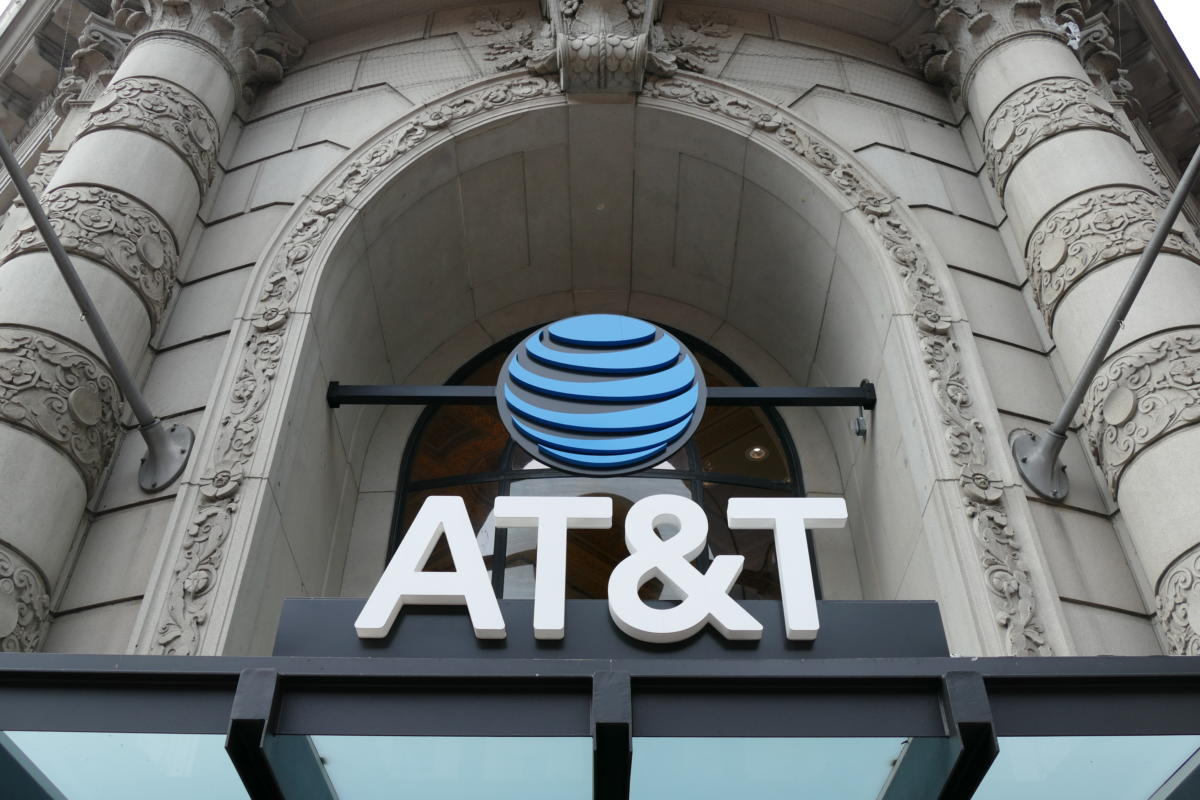AT&T: Quality & High Yield
Dividend growth investors like high yielding stocks because they offer more income. When it comes to these types of investments, investors want to be sure that the dividend is safe. Stocks with yields above 5% can be a red flag to as there maybe heightened risks of dividend cuts in the future. Generally, these companies have elevated payout ratios, making future increases unlikely unless earnings improve significantly or the company has to take on debt to pay for the dividend. Neither of these cases is ideal and investors should avoid these stocks.If earnings were to experience a significant decline, the dividend could very well be at risk.
There are some companies, however, that pay a healthy dividend yield that is well protected, allowing investors to have their cake and eat it too. Some companies offer both a high yield and a low payout ratio that reassures their shareholders that the dividend is not only safe, it can increase in size over time. Let’s examine AT&T’s (T) business, recent quarterly report and dividend history to see if the telecom giant is an appropriate high yield investment.

Company Background and Recent Earnings Results
AT&T provides communications and digital entertainment products, such as wireless and TV to customers.AT&T employs almost 250,000 and has a current market cap of more than $234 billion.
AT&T released 2nd quarter earnings results on July 24th. The company earned $0.91 per share, $0.06 above estimates and a 15% improvement year over year. Revenue declined 2.1% from the previous year to $39 billion, missing estimates by $300 million.
The company had 3.8 million net wireless additions, 3.1 million of which were in the U.S.AT&T added 46,000 postpaid wireless phone customers (phone plans with a contract) and 356,000 prepaid phone subscribers (plans without a contract) during the quarter. Postpaid phone churn, a measure of how many customers switch services, was just 0.82%. DirecTV had net ads of 342,000.
AT&T’s Dividend History
AT&T has increased its dividend for the past thirty-four years. Over the last ten years, the average annual increase has been 3.3%. The company last increased its dividend on December 15th of last year, giving shareholders a 2% increase.
What the company lacks in dividend growth it makes up for in dividend yield. At a current yield of 6.2%, AT&T offers one of the highest yields in all of the S&P 500 index. Even better, based off of the midpoint for earnings per share guidance for 2018 ($3.45) and the dividend for 2018 ($2.00), the company’s payout ratio is less than 58%. This leaves ample room for AT&T to continue to increase its payout ratio.
Benefits of Time Warner
For some time, the Department of Justice has attempted to block AT&T’s purchase of Time Warner. Now that it has been ruled that the acquisition can go forward, AT&T has made moves to integrate the two companies together. The company has already appointed a new head of HBO and a $15 per month streaming services that provides content owned by Time Warner. Investors should be aware that the DOJ is appealing the judge’s decision in this case, with legal briefs due by October 18th.
Time Warner’s 2nd quarter performance should make AT&T investors very happy about the acquisition. As a whole, Time Warner revenues were up almost 7% in the 2nd quarter.Broken down by segments, Turner, HBO and Warner Brothers revenues were up 3.2%, 13.3% and 10% respectively. Time Warner’s free cash flow was up 47% in the quarter. Due to the timing of the close, only the last sixteen days of the quarter were included in the 2nd quarter earnings results.
Altogether, AT&T produced $5.1 billion in free cash flow, an improvement of 46% from the same time period last year and an 82% increase from the 1st quarter. Year to date, free cash flow improved almost 19%. Cash from operations totaled $10.2 billion in the quarter. Added to 1st quarter’s total and AT&T generated $19.2 in cash from operations, an 8.5% increase year over year.
These improvements in cash flow and cash from operations will come in handy as AT&T attempts to pay down its massive debt levels of more than $160 billion. Net debt to earnings before interest, tax, depreciation and amortization, or EBITDA, was 2.9. The company aims to have this ratio around 2.5 by the end of next year.
Another factor to keep in mind that at a current price around $32, AT&T has a price to earnings multiple of just 9.3, well below the company’s 10-year average P/E of 13.4 and trading at an even steeper discount to the S&P 500’s P/E of 24.6.
Conclusion
With Time Warner now in the fold, AT&T’s ability to deliver content to consumers is only going to grow. This should lead to earnings and free cash flow growth that can be used to not only maintain the company’s dividend, but increase it going forward. AT&T already has a relatively low payout ratio and debt levels should also fall as cash flows improve. The stock’s valuation is also extremely attractive. While investors should always be wary of ultra-high yielding companies, they shouldn’t worry about AT&T being able to increase its dividend every year.
Disclaimer: Sure Dividend is published as an information service. It includes opinions as to buying, selling and holding various stocks and other securities. However, the publishers of Sure ...
more


